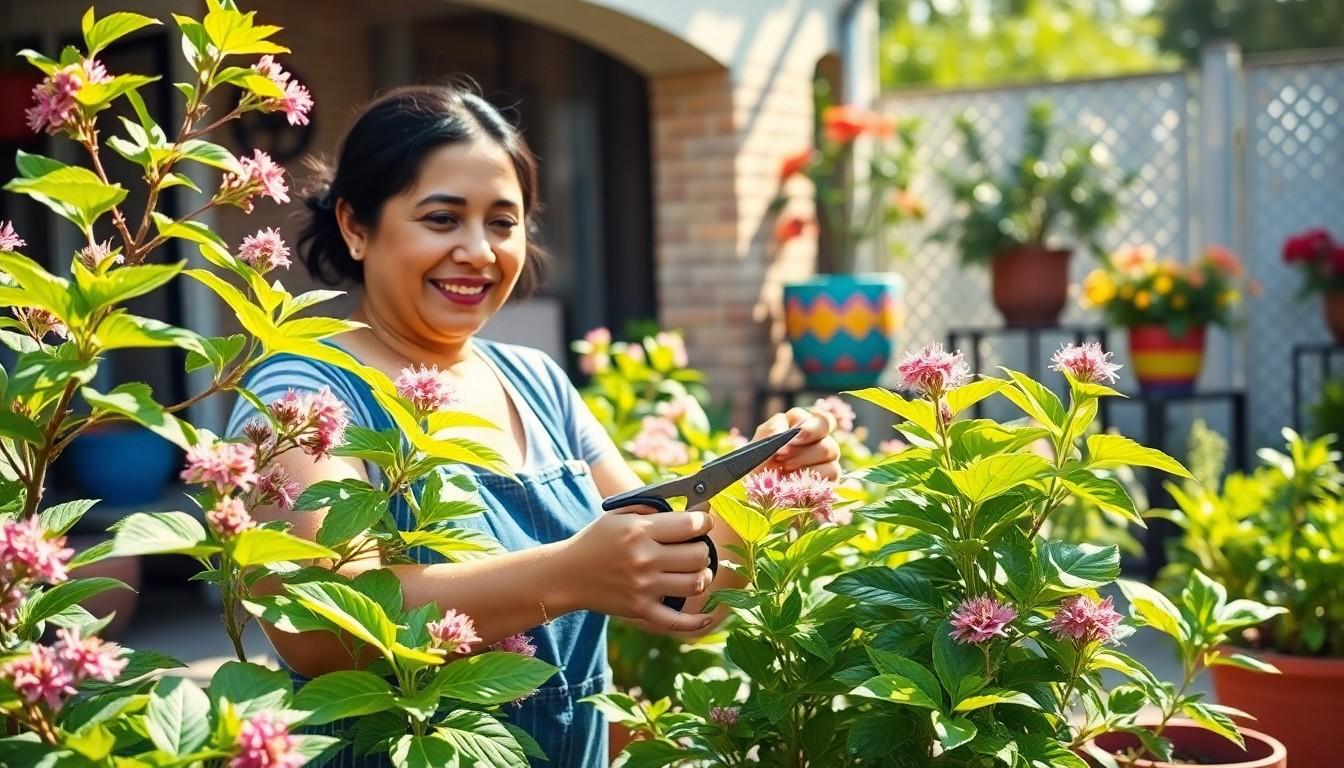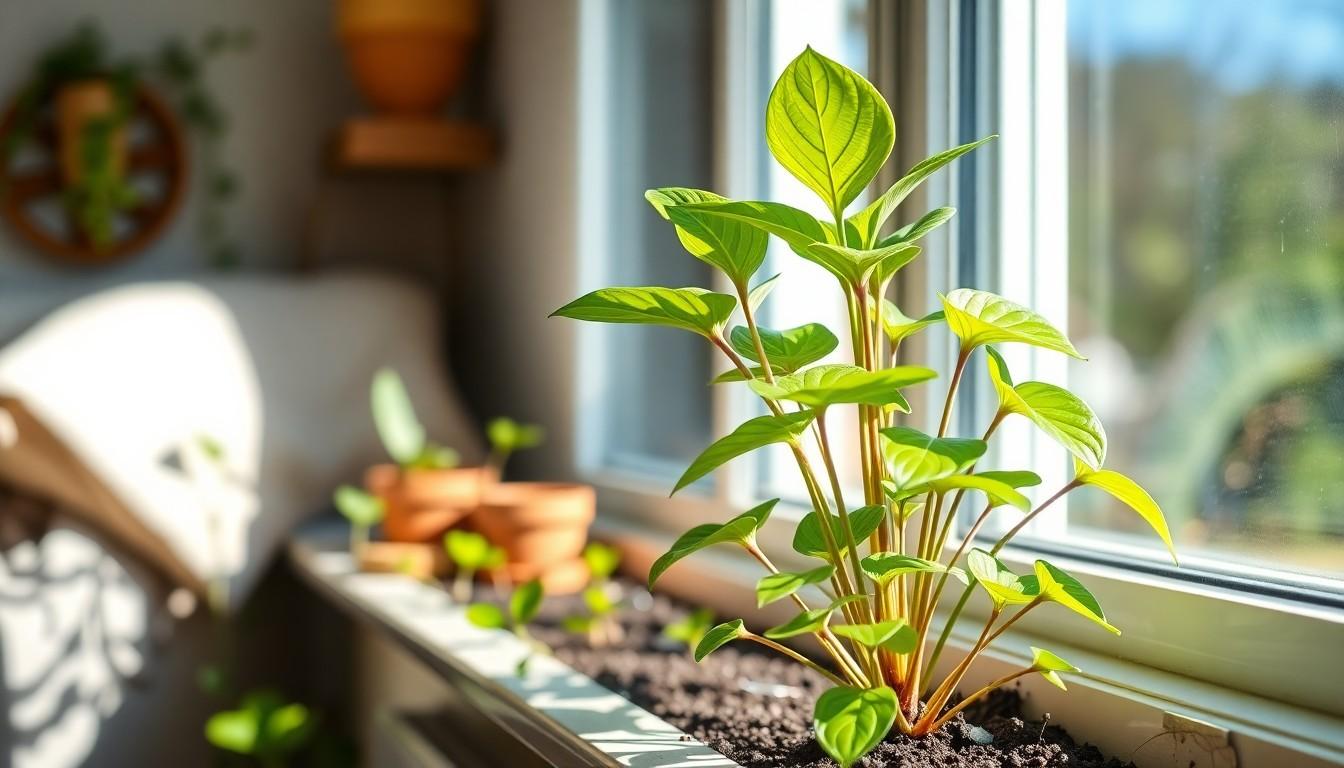Phone:
(701)814-6992
Physical address:
6296 Donnelly Plaza
Ratkeville, Bahamas.

Imagine enjoying a warm summer evening without the incessant buzzing of mosquitoes. Enter the mosquito plant, a botanical superhero that not only beautifies your space but also helps keep those pesky pests at bay. With its aromatic leaves and vibrant green hue, this plant is more than just a pretty face; it’s a natural deterrent packed with essential oils that mosquitoes can’t stand.
But before you think you can just toss a mosquito plant in a pot and call it a day, there’s a bit more to it. Proper care is essential to ensure it thrives and delivers on its promise of a bug-free zone. From sunlight to watering, understanding the needs of this plant can turn any novice gardener into a green-thumbed pro. Let’s dive into the essentials of mosquito plant care and unlock the secrets to a thriving, mosquito-repelling garden.
Mosquito plants effectively deter pests while providing aesthetic appeal. They thrive in various conditions, making them a popular choice for gardens.
Mosquito plants, scientifically known as Pelargonium citrosum, belong to the geranium family. Typically, these plants emit a strong citronella scent, which mosquitoes find repulsive. They grow as perennial herbs, reaching heights of 2 to 3 feet. Foliage varies from jagged to rounded leaves, offering an attractive addition to any garden. Many gardeners consider them to be hearty and low-maintenance, adaptable to various climates.
Mosquito plants offer multiple advantages for home gardens. First, they serve as natural repellents against mosquitoes and other pests, reducing the need for chemical insecticides. Second, the pleasant citrus fragrance enhances outdoor spaces, creating a more inviting atmosphere. Third, these plants attract beneficial insects, such as butterflies and bees, promoting overall garden health. In addition, they thrive in containers, making them suitable for balconies and patios.

Mosquito plant care involves understanding its ideal growing conditions and soil requirements. Proper care helps ensure healthy growth and effectiveness in repelling pests.
Mosquito plants thrive in full sunlight, needing at least six hours of direct light daily. Temperatures ranging from 70°F to 85°F suit them best. Humidity levels above 50% support robust growth, but these plants adapt to various humidity levels. Adequate air circulation prevents fungal issues. When grown outdoors, ensure protection from harsh winds to avoid damage. If cultivating indoors, place them near windows or light sources to maximize sunlight exposure.
Well-draining soil is essential for mosquito plants. A potting mix containing equal parts potting soil, perlite, and sand offers the right drainage. pH levels between 6.0 and 7.0 promote healthy root development. Avoid compacted soil to lessen the risk of root rot. If planting in the ground, amend clay-heavy soils with organic material for improved drainage. Replenishing nutrients every few months maintains soil health. It’s crucial not to overwater, as this can lead to waterlogged conditions detrimental to plant health.
Effective watering and fertilization practices ensure healthy growth of mosquito plants. These perennial herbs thrive when given the right care.
Mosquito plants require consistent watering without over-saturating the soil. Water deeply when the top inch of soil feels dry to the touch, ensuring moisture reaches the roots. Draining excess water from pots helps prevent root rot. Adjust watering frequency based on seasonal changes; during hot months, the plants may need more hydration, while cooler months demand less. Observing leaf color indicates moisture levels. Yellowing leaves often signal overwatering, while droopy leaves suggest underwatering.
Choosing the right fertilizer enhances growth and vitality of mosquito plants. A balanced 10-10-10 NPK fertilizer promotes strong development and health. Applying fertilizer every four to six weeks during the growing season provides essential nutrients. Alternatively, using a slow-release granular fertilizer allows for long-lasting nourishment. Organic options like fish emulsion or compost tea deliver beneficial nutrients without harsh chemicals. Monitoring plant growth helps determine if additional fertilization is necessary for optimal health and pest-repelling abilities.
Pruning and maintenance play vital roles in keeping mosquito plants healthy and vigorous. Regular pruning helps maintain shape and encourages bushier growth, which enhances pest-repelling capabilities.
Prune mosquito plants during the early spring and late fall to promote new growth. Spring pruning prepares the plant for the growing season, while fall pruning helps prepare it for dormancy. Remove any dead or damaged leaves throughout the year to keep the plant healthy. Monitor growth patterns, as this can determine the optimal timing for pruning, depending on the specific climate and conditions. The goal focuses on fostering optimal development, ensuring the plant remains lush and robust.
Use clean, sharp shears to prune mosquito plants effectively. Sharp tools prevent damage to stems and ensure precise cuts, promoting faster healing. Hand pruners work well for small branches and leaf removal, while loppers handle thicker stems. Disinfect tools before and after use to avoid introducing diseases. Store tools in a dry environment to maintain their sharpness and functionality. Proper tools aid in successful maintenance and help cultivate vibrant, healthy mosquito plants.
Effective pest and disease management is crucial for maintaining healthy mosquito plants. Addressing common issues promptly ensures vibrant growth and peak pest-repelling abilities.
Aphids, spider mites, and whiteflies frequently attack mosquito plants. Aphids, small and soft-bodied, cluster on new growth, while spider mites create fine webbing and cause leaf discoloration. Whiteflies, resembling tiny moths, wreak havoc by sucking plant sap. Identifying these pests quickly helps gardeners take action to protect their plants. Regular observation allows for early detection, facilitating easier control measures.
Implementing preventive measures significantly reduces pest infestations. Ensuring neighbor plants aren’t harboring pests lowers the risk of spread. Additionally, practicing good sanitation by removing debris and diseased leaves prevents breeding grounds. Introducing beneficial insects like ladybugs and lacewings can also help manage pest populations organically. Spraying a diluted soap solution on affected areas offers a simple, effective treatment method. Adjusting watering routines reduces excess moisture that attracts pests, promoting overall plant health.
Mosquito plants offer an effective and natural solution for repelling unwanted pests while enhancing outdoor spaces with their delightful fragrance. With proper care and attention to their growing conditions watering practices and maintenance routines these plants can thrive and provide lasting benefits. By cultivating healthy mosquito plants gardeners can create a more enjoyable environment for family and friends while also attracting beneficial insects. Embracing the care tips outlined ensures that these hardy plants will flourish and contribute to a pest-free outdoor experience.